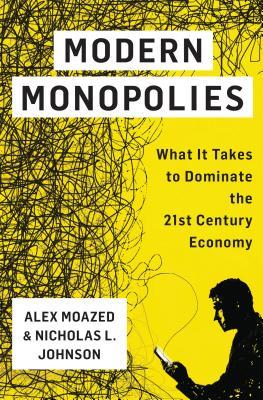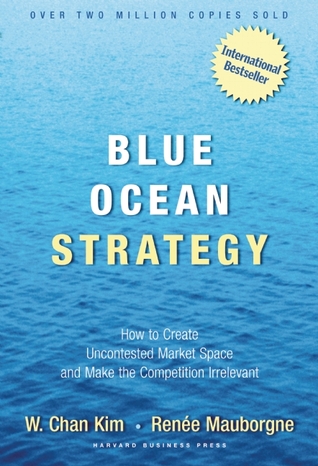Business and Productivity Book Notes - PART II
The second part of the business and productivity notes. This time, more business!
MODERN MONOPOLIES by Ale Moazed & Nicholas L. Johnson – concerns platform businesses

While the internet is open, every activity has to go through a platform.
The old business model – Product/Service = Distribution = Customer
The new platform business model – consumer and producer are the same and work through a platform.
Platforms create the means of connection.
Core transactions of a platform:
(1) Audience building
(2) Matchmaking
(3) Providing core tool and services
(4) Setting rules and standards
Capitalism and competition are opposites.
What provides defensibility against copycats? Networks of users, transactions or data.
Unicorn Company – a company valued at more than US$1 billion.
Platforms become more efficient the larger they become.
Expenses don’t grow as fast as revenue does at this point.
Short-term goals: user acquisition and expansion.
Long-term goals: user retention and diminishing funds
Network value – is value users derive from other people’s use of a platform.
Revenue avenues have to be adapted to what devices users use most.
Core transaction – platforms need their users to repeat core transactions over and over.
Core transaction for Exchange Platforms (e.g. etsy, ebay) – use a double opt-in: both parties have to agree to exchange at that moment.
Focusing on ONE core transaction first, makes success more likely.
There is currently no good troll and harassment tool available.
Create a lightweight platform as quickly as possible to gather feedback and see if the idea works. Modify later.
Sustainable networks > vanity metrics (e.g. amount of users)
Potential new users are driven by an attraction to an existing user base.
Attract marquee users in the beginning to uphold a certain quality.
If one’s platform business ISN’T under scrutiny by law – maybe it isn’t big enough of an idea.
Could your business sell virtual goods?
Remove transaction costs – money, time OR effort.
Use under-served markets.
Large supply, that isn’t connected, is important.
ZERO TO ONE by Peter Thiel – concerns start-up building

QUICK NOTE: I had a few serious issues with this book. I decided to include them in my notes. Those critical notes are in bold and italic and contain two pluses. This does not take away from the useful parts.
“What important truth do very few people agree with you on?”
Dot-com bubble while crazy, had an upside – it showed optimism about a technological future.
To make money – Monopoly > Perfect Competition. Monopolies own their market, while competitors have to price-gauge through the market.
“In business, equilibrium means stasis, and stasis means death.” - If one’s in competition, one’s demise won’t be felt. One needs to be indispensable.
The more one competes, the less on gains. War is costly business.
Proprietary technology must be at least 10 x better than the closest competitor. How? By making something completely new.
Every start-up should start with a very small market. After = monopolize.
Sequencing is underrated. Dominate a specific niche first and then scale to adjacent markets.
Well-roundedness = many-sided mediocrity. “Be a monopoly of your own.”
++ Peter Thiel is calling out Europe for having a “vacation-mania” - fundamentally misunderstanding Europeans…++
How can the future get better if no one plans for it?
In start-ups: Intelligent Design > Darwinism
Founders only sell when they have no concrete vision for the company anymore.
++ Largely unconnected philosophy undergrad ramble about the evils of not believing in “secrets”.++
A start-up which messes up its foundation, cannot be fixed.
Unless a company is publicly held, its board should never exceed 5 people and is ideally comprised of 3 people.
++ Thiel decries employees who ask for an actual salary instead of those taking equity as payment…++
Attract good employees by explaining why your mission is compelling.
Distribution is essential to the design of a product – start-ups should not attempt to compete (in design) with big companies.
Clean up your digital footprint!
Computers won’t replace humans, but complement them. ++ (Thiel forgets jobs that are not IT; those will unquestionably be replaced, and so will all simple IT jobs, e.g. data entry, admin etc.)++
(1) The Engineering Question: Can you create a breakthrough?
(2) The Timing Question: Is this the right time?
(3) The Monopoly Question: Are you starting with a big share?
(4) The People Question: Are you starting with the right team?
(5) The Distribution Question: Do you know how to sell?
(6) The Disability Question: Is your idea still feasible in 10 to 20 years?
(7) The Secret Question: Is your idea unique?
“Real technologists wear T-shirts and jeans” ++ (ok?…Thiel should read up on gatekeeping.)++
Highly visible success can attract highly visible attacks.
BLUE OCEAN STRATEGY by W. Chan Kim & Renée Mauborgne – concerns market space

Reduce (confusion), Eliminate (varying interfaces), Create (ease-of-use interface), Raise (price)
Red Ocean = market with lots of competition, Blue Ocean = new market.
RUNNING LEAN by Ash Maurya – concerns minimalist business planning

“Customers don’t care about your solution. They care about their problems.” by Dave McClure, 500 Startups
How to get the product right:
(1) Have a problem worth solving.
(2) Define smallest possible solution.
(3) Build (small).
(4) Verify at a large scale.
How to get customers:
(1) Who has the ‘pain’.
(2) Find early adopters.
(3) Outbound channels are ok.
(4) Build scalable inbound channels asap.
Building a viable business:
(1) Identify your competition and set a price.
(2) See what customers think of your pricing (verbally).
(3) Test what customers actually do with your pricing.
(4) Optimize pricing.
“Content precedes design. Design in the absence of content is not design, it’s decoration.” by Jeffrey Zeldman, A List Apart
Multi-sided Product – connects buyers and sellers and provides value by reducing transaction friction.
Build _only necessary features _first. Short coding sessions only.
80% should be spend optimizing necessary features.
If one’s company has both customers and users, two Lean Canvases are necessary.
Charge from day 1.
